California Oil, Gas, and Groundwater Program
Fluid Migration Pathways to Groundwater in Mature Oil Fields: Exploring the roles of water injection/production and oil-well integrity, Lost Hills and South Belridge Oil Fields
Summary of McMahon and others (2023).
Key Findings
- Oil-field water injection and production can alter hydraulic gradients and groundwater chemistry.
- Wells can act as fluid migration pathways, particularly when they are old, not constructed to modern standards, or both. In this study, about 40 percent of wells drilled before 1976 had more than 10 meters without cement in the annulus straddling either casing damage, the base of groundwater containing 10,000 mg/L total dissolved solids (TDS), or both.
- Together, net fluid injection and wellbore pathway risks combined with groundwater pumping caused upward chemical transport from deeper groundwater and hydrocarbon reservoirs in an aquifer overlying two mature oil fields.
Each of these three findings is explained in more detail below.
Net Injection and Hydraulic Gradients
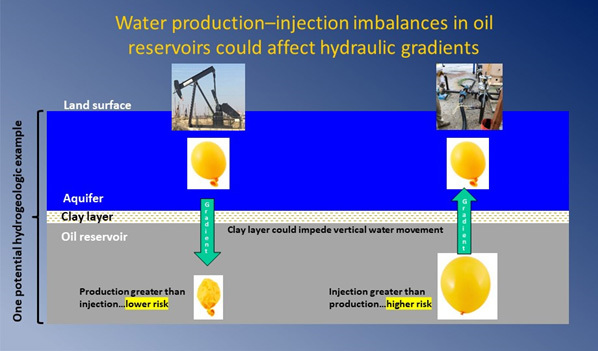
Blue arrows in this graphic show hydraulic gradients in near waste disposal wells and groundwater elevation data along a cross-section.

Figure 3 in McMahon and others (2023).
Cross section location (A to A') in South Belridge Oil Field with area of potential fluid migration highlighted in dashed green oval.
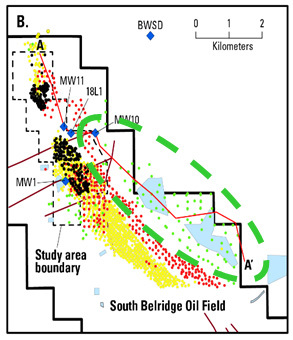
Figure 2B in McMahon and others (2023).
Physical Condition of Oil Wells and Fluid Migration Pathway Risk
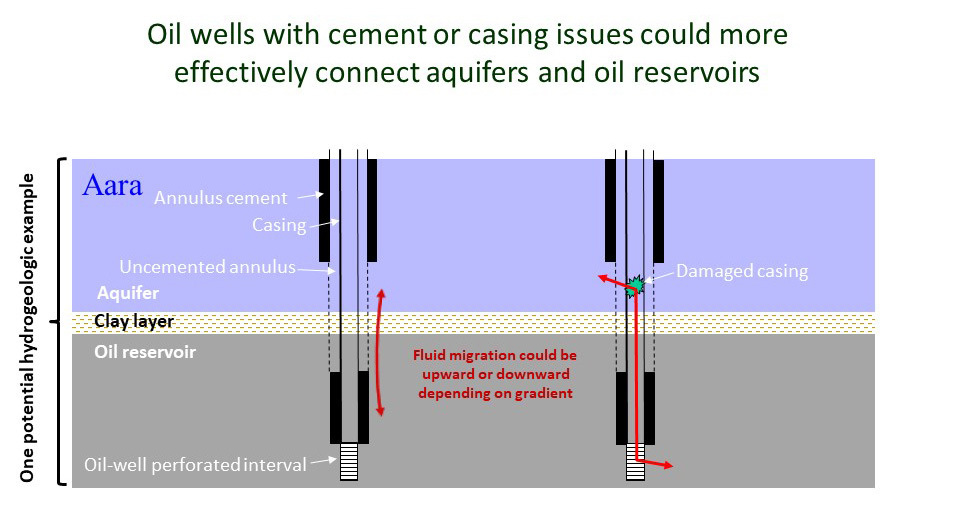
Damaged oil wells and water injection/production can create fluid migration pathways.

This graphic depicts how well age relates to fluid migration risk in two mature oil fields.
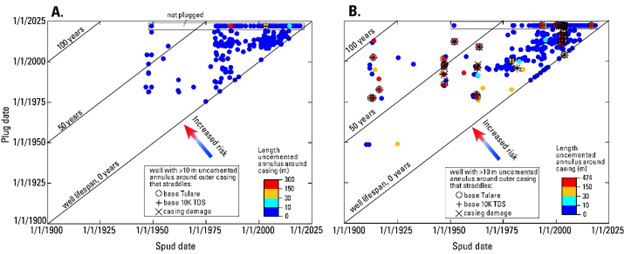
Chemical Transport Patterns

Using multiple lines of evidence and geochemical signatures of the more saline water, we found increasing salinity in the Tulare aquifer in the South Belridge Oil Field study area. The geochemical characteristics indicated td saline water in the well was not oil-field water but rather native, saltier water at the bottom of the aquifer moving upward as a result of hydraulic gradient changes associated with injection.
In the Lost Hills study area, the overlap of upward hydraulic gradients, extensive pumping in the lower Tulare aquifer, and proximity of compromised oil wells were the primary factors found to affect risk for chemical transport from deeper to shallower geologic units.
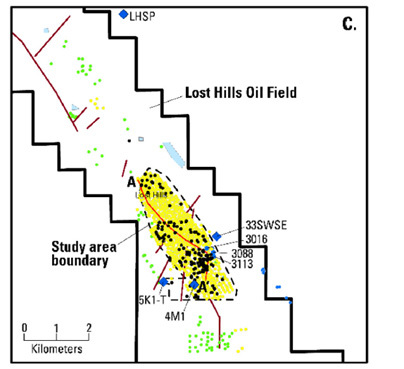

- Upward movement of saltier water was only apparent because long-term trend information on groundwater-level and chemistry data had been collected and because monitoring wells were installed in areas with overlapping fluid migration risk factors.
- The methods used here can be applied in other situations where these risk factors are present.
